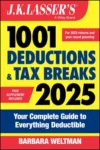Answered: October 26, 2015 11:33 am
I had to sell my house before meeting the ownership and use tests for the home sale exclusion. My move was because of unforeseen circumstances. How do I request this safe harbor and use the exclusion?
If you fail to meet the two-out-of-five year ownership and use tests, you can qualify for a partial exclusion (related to the period of time you were in the home) if you can show that the move was because of an unforeseen circumstance. There have been a number of examples given by the IRS on what constitutes an unforeseen circumstance (e.g., divorce, unemployment, multiple births from a single pregnancy). If you have one of these or believe your situation is an unforeseen circumstance, you can claim the partial exclusion. Be prepared to defend your position if the IRS questions your return. These are the factors used by the IRS to decide whether the sale is the result of an unforeseen circumstance:
- The situation causing the sale arose during the time you owned and used your property as your residence.
- You sold your home not long after the situation arose.
- You could not have reasonably anticipated the situation when you bought the home.
- You began to experience significant financial difficulty maintaining the home.
- The home became significantly less suitable as a main home for you and your family for a specific reason.
To be absolutely sure, you can ask the IRS’s opinion about whether your situation qualifies by submitting a private letter ruling request. There’s a user fee for making this request.
Foreign earned income exclusion
In 2007, up to $85,700 of foreign earned income is exempt from tax if a foreign residence or physical presence test is met.



